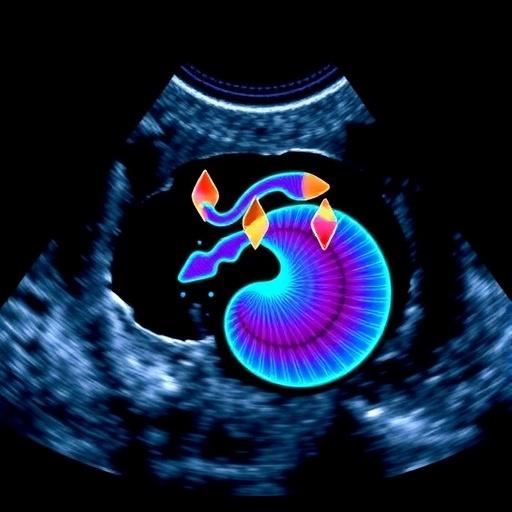
Credit: Fawn Gracey/Boston Children's Hospital
Boston, MA (May 21, 2018) – Bacteria have long been thought to develop antibiotic resistance largely due to repeated exposure through over-prescribing. But could much bigger environmental pressures be at play?
Seeking to better understand the distribution of antibiotic resistance across the U.S., a multidisciplinary team of epidemiologists from Boston Children's Hospital and the University of Toronto have found that higher local temperatures and population densities correlate with a higher degree of antibiotic resistance in common bacterial strains. The findings were published today in Nature Climate Change.
"The effects of climate are increasingly being recognized in a variety of infectious diseases, but so far as we know this is the first time it has been implicated in the distribution of antibiotic resistance over geographies," says the study's lead author, Derek MacFadden, MD, an infectious disease specialist and research fellow at Boston Children's Hospital. "We also found a signal that the associations between antibiotic resistance and temperature could be increasing over time."
"Estimates outside of our study have already told us that there will already be a drastic and deadly rise in antibiotic resistance in coming years," says the paper's co-senior author John Brownstein, PhD, who is Chief Innovation Officer and director of the Computational Epidemiology Group at Boston Children's and professor of pediatrics at Harvard Medical School (HMS). "But with our findings that climate change could be compounding and accelerating an increase in antibiotic resistance, the future prospects could be significantly worse than previously thought."
During their study, the team assembled a large database of U.S. antibiotic resistance information related to E. coli, K. pneumoniae, and S. aureus, pulling from various streams of hospital, laboratory and disease surveillance data documented between 2013 and 2015. Altogether, their database comprised more than 1.6 million bacterial pathogens from 602 unique records across 223 facilities and 41 states.
Not surprisingly, when looking at antibiotic prescription rates across geographic areas, the team found that increased prescribing was associated with increased antibiotic resistance across all the pathogens that they investigated.
Then, comparing the database to latitude coordinates as well as mean and medium local temperatures, the team found that higher local average minimum temperatures correlated the strongest with antibiotic resistance. Local average minimum temperature increases of 10 degrees Celsius were found to be associated with 4.2, 2.2 and 3.6 percent increases in antibiotic resistant strains of E. coli, K. pneumoniae, and S. aureus, respectively.
More unsettling still, when looking at population density, the team found that an increase of 10,000 people per square mile was associated with three and six percent respective increases in antibiotic resistance in E. coli and K. pneumoniae, which are both Gram-negative species. In contrast, the antibiotic resistance of Gram-positive S. aureus did not appear to be significantly affected by population density.
"Population growth and increases in temperature and antibiotic resistance are three phenomena that we know are currently happening on our planet," says the study's co-senior author Mauricio Santillana, PhD, who is a faculty member in the Computational Health Informatics Program at Boston Children's and an assistant professor at HMS. "But until now, hypotheses about how these phenomena relate to each other have been sparse. We need to continue bringing multidisciplinary teams together to study antibiotic resistance in comparison to the backdrop of population and environmental changes."
MacFadden says the transmission factor is of particular interest for further scientific research.
"As transmission of antibiotic resistant organisms increases from one host to another, so does the opportunity for ongoing evolutionary selection of resistance due to antibiotic use," MacFadden says. "We hypothesize that temperature and population density could act to facilitate transmission and thus increases in antibiotic resistance."
"The bottom line is that our findings highlight a dire need to invest more research efforts into improving our understanding of the interconnectedness of infectious disease, medicine and our changing environment," Brownstein concludes.
###
In addition to MacFadden, Brownstein and Santillana, additional authors on the study are Sarah McGough and David Fisman.
This work was supported by a Canadian Institute for Health Research Fellowship, the Clinician Scientist Program at University of Toronto's Department of Medicine and the National Library of Medicine (NIH R01 LM011965).
About Boston Children's Hospital
Boston Children's Hospital, the primary pediatric teaching affiliate of Harvard Medical School, is home to the world's largest research enterprise based at a pediatric medical center. Its discoveries have benefited both children and adults since 1869. Today, more than 3,000 scientists, including nine members of the National Academy of Sciences, 17 members of the National Academy of Medicine and 11 Howard Hughes Medical Investigators comprise Boston Children's research community. Founded as a 20-bed hospital for children, Boston Children's is now a 415-bed comprehensive center for pediatric and adolescent health care. For more, visit our Vector and Thriving blogs and follow us on social media @BostonChildrens, @BCH_Innovation, Facebook and YouTube.
Media Contact
Bethany Tripp
[email protected]
617-919-3110
@BostonChildrens
http://www.childrenshospital.org/newsroom





